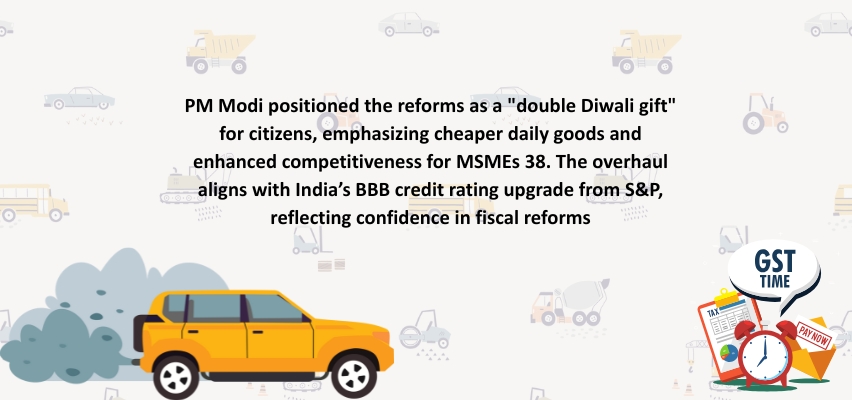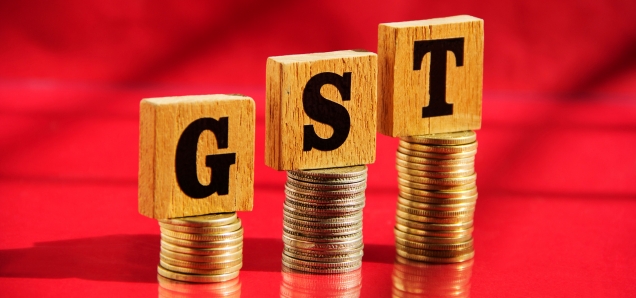Major GST Overhaul to Make Cars and Two-Wheelers More Affordable, Boosting Auto Sector
In a landmark move poised to revitalize India’s automobile industry, the central government has proposed sweeping reforms to the Goods and Services Tax (GST) structure, significantly reducing tax rates on passenger vehicles and two-wheelers. The changes, announced as part of Prime Minister Narendra Modi’s "next-generation GST reforms," could make entry-level cars and motorcycles substantially cheaper by Diwali 2025.
1. Key Changes in GST Structure
-
Tax Reduction for Vehicles: Passenger vehicles and two-wheelers currently taxed at 28% GST (plus additional cess) will be shifted to the new 18% slab. The existing 28% GST bracket will be abolished entirely.
-
Cess Elimination: The complicated compensation cess system—which added 1%–22% to small cars and up to 3% for larger two-wheelers—will be scrapped. This simplifies the tax structure and reduces overall costs.
-
"Sin Tax" for Luxury Vehicles: Larger cars and SUVs may face a new 40% "special rate" to maintain revenue neutrality, though their prices could still drop by 3%–5%.
-
Electric Vehicles (EVs): Continue at 5% GST, reinforcing their cost advantage .
Expected Price Reductions
| Vehicle Type |
Current Tax |
Proposed Tax |
Estimated Price Drop |
| Small petrol/diesel cars |
29%–31% |
18% |
Up to 8% |
| Large cars / SUVs |
Up to 50% |
~40% |
3%–5% |
| Two-wheelers (<350cc) |
28% |
18% |
~10% |
A small car priced at ₹5 lakh could become cheaper by ₹25,000, making mobility more accessible for first-time buyers and rural consumers.
2. Industry Impact and Reaction
-
Demand Revival: The auto sector, especially entry-level segments, has struggled with declining sales. Small-car sales fell 11.6% in FY25, while two-wheeler demand stagnated. Lower prices are expected to boost sales by 15%–25%.
3. Key Beneficiaries:
-
Maruti Suzuki: Dominates small cars (half its sales volume); shares surged 9% on reform news.
-
Hero MotoCorp & Bajaj: Leaders in entry-level motorcycles; advocated for GST cuts to ease affordability.
-
Insurance Premiums: Health and life insurance may see GST slashed to 5% or nil (from 18%), lowering policy costs.
4.Broader Economic Implications
-
Revenue Trade-off: The tax cuts could reduce government revenues by $4–6 billion, but are projected to spur consumption and offset losses through higher volumes.
-
Market Euphoria: Auto stocks rallied sharply, with the Nifty Auto Index jumping 4.6%.
-
Consumer Sentiment: Daily essentials (e.g., packaged foods, school supplies) and appliances (ACs, TVs) will also see tax reductions, amplifying disposable income gains.
5.Next Steps
-
The proposal will be reviewed by a Group of Ministers on August 21 and requires final approval from the GST Council by October.
-
Implementation is targeted ahead of Diwali (October/November 2025).
6. Prime Minister’s Vision
-
PM Modi positioned the reforms as a "double Diwali gift" for citizens, emphasizing cheaper daily goods and enhanced competitiveness for MSMEs.
-
The overhaul aligns with India’s BBB credit rating upgrade from S&P, reflecting confidence in fiscal reforms.
Why It Matters:
This GST rationalization addresses years of industry demands for tax simplicity and affordability. By reducing acquisition costs, it could accelerate auto adoption in rural India, support job creation, and reinforce economic growth amid global headwinds


